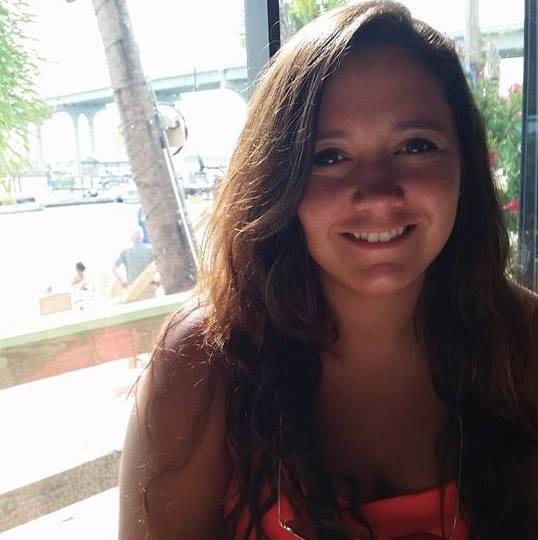In 2016, Kelly M. was 26 and on her way to the good life. She had a decent job as an insurance underwriter, an active social life, and had recently closed on a house. But she was bound to have at least one small piece of bad news to offset the good.
The bad news came when Kelly was clearing out the small yard of her new home. The property hadn’t been well-maintained by the previous owners, and in North Florida, it didn’t take long for the weeds to get out of control. She was trying to free a tree from a particularly stubborn kudzu vine, when her back objected.
“There was this one, particularly thick vine dangling from one of the branches,” Kelly recalls. “I hacked away at it, but couldn’t get all the way through the vine. So, being the educated, civil human that I am, I decided to remove it Tarzan-style. I pulled on the branch and swung away. As I pulled, I felt a strange sensation shoot down my left buttocks and into my leg. However, I was quickly distracted by my victory over the vine. The odd sensation settled into a slight discomfort, and I assumed I had pulled a muscle, so I kept working. As the day went on, the discomfort persisted.”
As the days turned into weeks, and the weeks turned into months, Kelly realized her pain wasn’t going anywhere. Although her sciatica rarely reached unmanageable levels, it was a constant annoyance which manifested as a low-grade discomfort in her left side. The mostly-tolerable pain was punctuated with sharp, shooting pains down her left leg, and the tingling sensation that’s a hallmark of nerve pain. She also experienced weakness in her left leg, and tended to drag it during flares unless she made a conscious effort to correct it.
Kelly fully appreciated how devastating back problems could be, having witnessed a family member’s hellish trek toward a cure. Her mother has a history of herniated discs, and at one point the condition was so debilitating that she couldn’t walk or sit for more than a few minutes without experiencing pain.
In her mother, Kelly also had a good role model for how to stick it out and find a solution. It took some trial and error, and more than a few doctors’ visits and frustrated calls with the insurance company, but Kelly’s mother is now able to walk and sit for longer periods. She is more or less pain-free. A few rounds of nerve blocks and ablations helped to dull the pain substantially, and Kelly’s mother also found some lifestyle modifications that helped. She got comfortable (not prescription or custom orthotic) shoes, a lumbar support pillow for the car, and an excellent zero-gravity chair to take the strain off her back while at home.
Kelly, meanwhile, embarked on her own quest for a cure. She saw her primary care doctor, and there was talk of getting an MRI. But insurance requirements mandated that Kelly first get an X-ray and take a course of physical therapy. Kelly signed on for physical therapy, but didn’t see much benefit from the exercises. It was also difficult to book appointments and squeeze sessions into her already-packed schedule. Kelly’s enthusiasm waned, and she didn’t complete the course.
However, she did get one important takeaway from PT. Kelly’s physical therapist was reasonably sure that her pain was due to a bulging disc in her lower spine. While this diagnosis was not confirmed by imaging, it provided a reasonable working theory for managing her pain.
Kelly tried a few products, with mixed results. Her Sacro Wedgy® seemed to help. The Quell device, not so much. These days, she relies on lifestyle changes for day-to-day pain relief. She’s stopped doing chores that aggravate her back, like sweeping, pressure washing, raking the yard, and using a leaf blower. She also takes care not to lift heavy things. (Usually, that is. She has an independent streak, and is not always content to hand off tasks.) Her fiancé, who has lived with Kelly for the last two and a half years, takes on a lot of the heavy lifting. During intense episodes, Kelly also relies on over-the-counter NSAIDs for pain relief.
Fitness is another activity that tends to get crowded out of Kelly’s busy schedule, and it can be difficult to find activities that are sciatica-friendly. She still enjoys doing yoga, as long as the third warrior pose is not part of the routine. (That pose definitely does her back no favors.) Barre classes seemed to help, but were too expensive to continue long-term. Kelly is now eagerly awaiting the arrival of her stationary bike, which, like so many products, is on back order due to a surge of COVID-19-induced demand.
While Kelly’s pain is still a constant companion, she prefers to count her blessings. She is very aware that others have pain that is far more intense, and she is grateful that her pain is merely annoying, rather than debilitating.
She also admits that she doesn’t always manage her condition as carefully as she should, and it might catch up with her someday. “I know that I absolutely should take the time to deal with it and resolve it, but I’m sure I’ll wait for it to cause significant pain before I do,” she said. Then she added, “[D]on’t be like me.”

It doesn’t sound like she was properly diagnosed. She needs her Lumbar MRI to rule out the spine, and if it does, then a MRN to see if she has piriformis syndome.
What did she have RFA on? Nerve roots or peripheral nerves? Peripheral nerves can be disconnected to stop the pain signals to the brain.
If it’s Lumbar, and the pain returns, I hope she gets a Neurosurgeon to give her a second opinion.